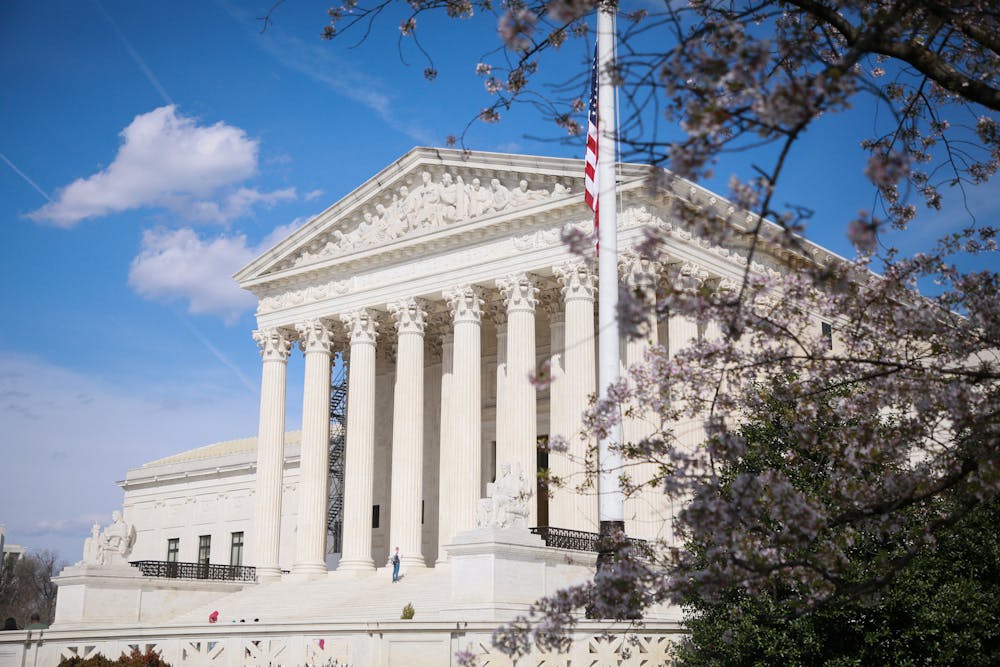Penn can continue affirmative action. Managers at private universities are deciding to end affirmative action in admission policies, but doing so is not required. Let me explain.
On Thursday, Jun. 29, the Supreme Court made it unlawful for private colleges to take race into consideration as a specific factor in admissions under Title VI of the Civil Rights Act of 1964.
Title VI states: “No person in the United States shall, on the ground of race, color, or national origin, be excluded from participation in … any program or activity receiving federal financial assistance.” The critical phrase here being, “under any program or activity receiving federal financial assistance.”
Thus, Penn has the choice of either rejecting all federal financial assistance, or following the new rules. Penn leadership has indicated their plans to conform in an email sent to the Penn community, writing, “We are studying the Court’s opinion to ensure that we admit students in compliance with the law.”
How easy would it be, financially, for Penn to instead refuse federal funding?
Before we answer that question, it is important to know how much money Penn receives from the federal government. In fiscal year 2020, Penn received $884.7 million from Sponsored Programs, which are awards that support research. Most of this funding (70.9%) was grants awarded to the Perelman School of Medicine.
Penn also indirectly receives money in the form of grants to its students. 46% of Penn’s undergraduate population receives federal student aid, with an average grant amount of $56,000 in 2020. Penn has an undergraduate population of 10,412, putting the annual total for student aid at $268.2 million.
However, this yearly $268 million is not going to the University, but instead to its students, so Penn would not lose this funding. The University would, however, have to reject all of the $884.7 million that it receives for Sponsored Programs if it continued affirmative action. Instead, Penn can continue to fund these programs by matching that annuity with private money or by shutting down the programs that those dollars fund.
It is unlikely that the University would shut down a significant amount of our research to continue affirmative action — but the private donation option is plausible.
Whenever funding at wealthy institutions comes up, the knee-jerk response of financially illiterate people is: “Use the endowment!” While Penn’s endowment currently sits at a ripe $20.7 billion, that money is used as a principal to create cash flows that fund programs across the University. Additionally, endowment donations usually come with strings attached, requiring them to be used strictly for a certain program.
A private fund created by the University would need to produce $884.7 million in yearly interest income to replace federal funds and to avoid having to raise money every year. To calculate how large of a donation Penn would have to receive to generate an $884.7 million annuity, we can take the yearly income and divide it by Penn’s average endowment return to get $7.43 billion. A fund of this size would only need to be raised once and could replace the annual $884.7 million federal funding. Unless the average return of our endowment goes down or inflation outpaces our return rate, this fund could replace federal grants in perpetuity.
$7.43 billion is a big number, but it isn’t impossible to raise. If any of Penn’s billionaire alumni took an interest in creating a private program that supports Penn’s scientific research while preserving affirmative action, the problem would be solved overnight. However, in lieu of any special circumstance such as a generous donation, Penn would have to raise the funds through a traditional fundraising campaign.
Penn’s most recent fundraising venture which concluded in 2021, the Power of Penn, raised $5.4 billion over eight years for an array of initiatives. The previous campaign, Making History, raised $4.1 billion. At that growth rate, we could expect our next campaign to generate around $6.8 billion, which is near our magic $7.43 billion.
With inflation adjusted, in our last fundraising campaign, we raised on average $763 million per year. Either it would take 10 years to fully replace the government, or the University must improve our speed of raising capital. It is important to note that funds from this campaign would solely be used for replacing federal funding, not the vast collection of programs that a campaign usually supports. Besides, it’s unclear if donors would financially support preserving affirmative action the same way they do traditional funding causes.
Hypothetically, Penn can continue affirmative action through one fundraising campaign. Penn leadership, however, has already announced its dual-commitment to compliance with the law and preserving an academic community that is “diverse across many dimensions.”
The latter commitment will be more difficult now as it relates to race-based affirmative action. The court was clear that what cannot be done directly through a checkbox, cannot be done indirectly through a different vector.
As a result, the demographics of universities across the nation that have long practiced affirmative action will necessarily change. For Penn and all other schools capable of raising sums competitive with government distributions, this change is a choice.
BRETT SEATON is a rising Wharton junior studying finance from Manhattan, Kan. His email is bseaton@wharton.upenn.edu.









